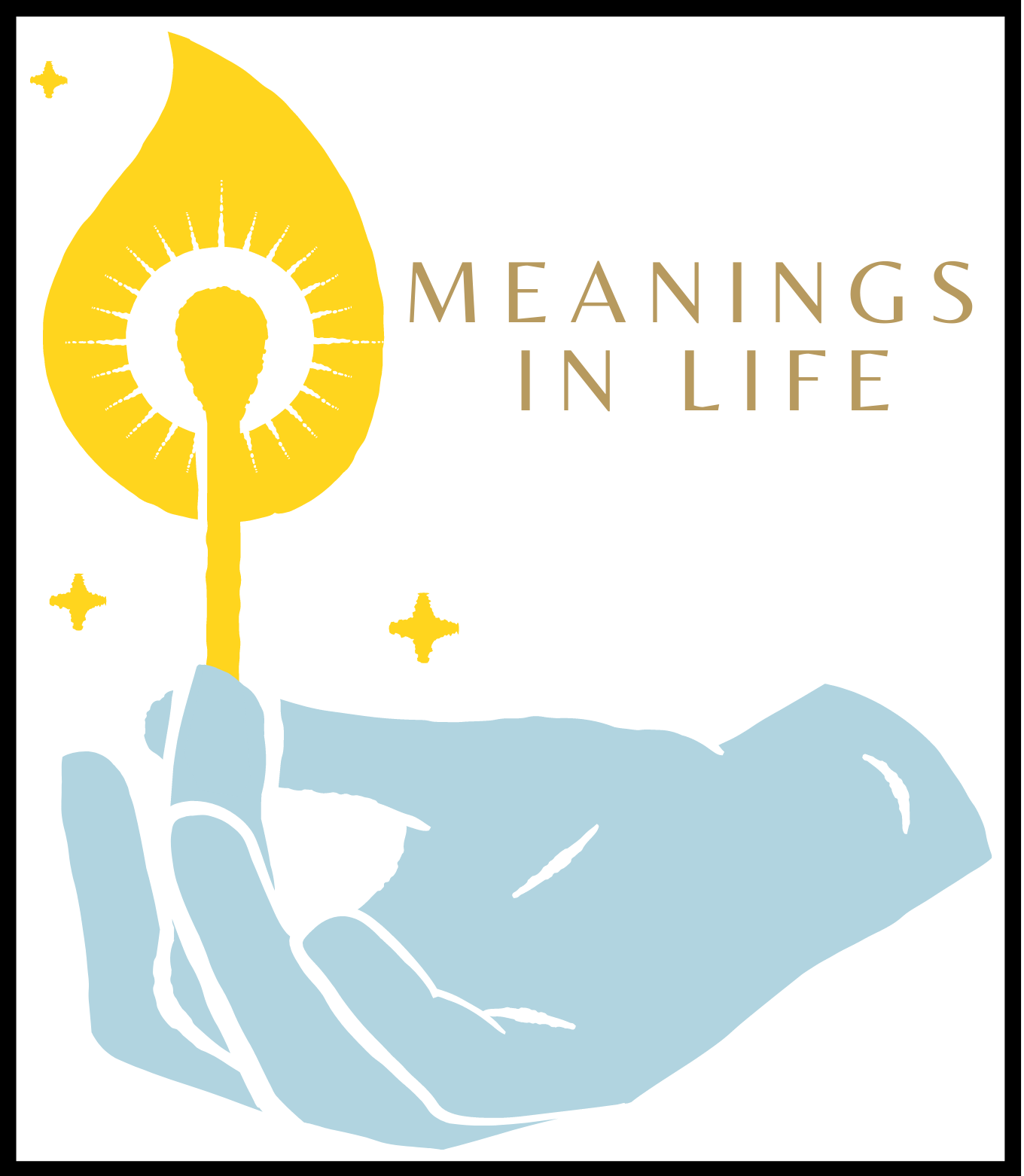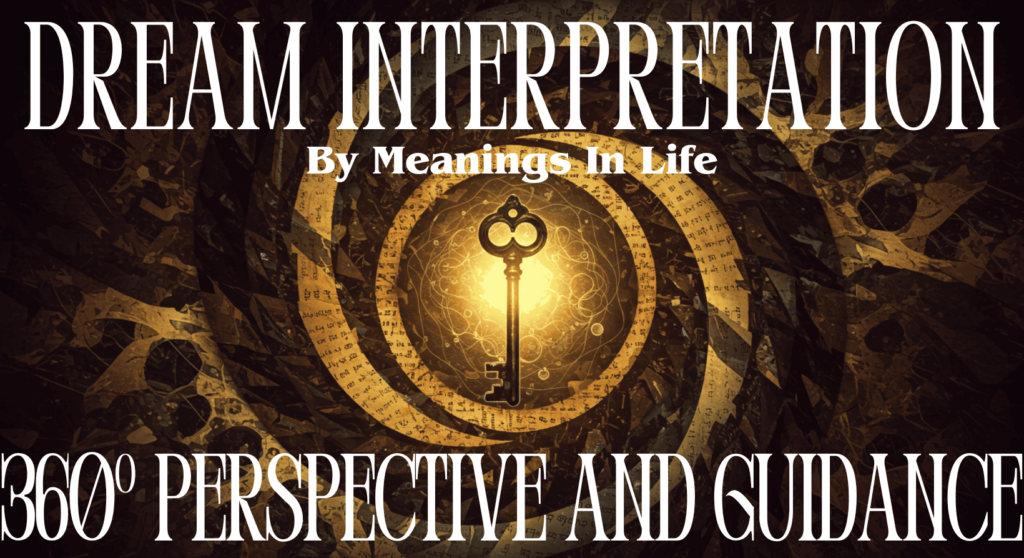The Intriguing World of Dreams in the Bible
In the transcendent tapestry of human life, dreams hold a distinct and significant place. These ephemeral experiences are often considered to be profound messages from our subconscious minds or divine revelations. This mystical element is particularly evident in the interpretations derived from the Bible, where dreams are frequently depicted as divine interventions or prophetic visions.
Various biblical figures, from Joseph to Daniel, were known for their ability to understand dreams and unravel their hidden meanings. The Bible contains numerous instances where dreams played pivotal roles.
One of the earliest examples is found in Genesis when God communicates with Abraham through a dream promising him descendants as numerous as the stars. Later on, Joseph’s interpretation of Pharaoh’s dream helps save Egypt from a severe famine.
In this biblical context, dreams are not merely random sequences created by our sleeping brains; they carry weighty significance and often contain predictive or advisory messages from a divine source. They serve as a conduit between humanity and divinity, opening up avenues for heavenly guidance and intervention.
Decoding Details: The Art of Biblical Dream Interpretation
The phenomenon of interpreting dreams isn’t exclusive to modern psychology—it has ancient roots tracing back to religious texts like the Bible. Biblical dream interpretation relies on symbolic meanings assigned to common elements found within these nocturnal narratives.
For instance, water often symbolizes cleansing or spiritual renewal in biblical dream interpretations—reflecting its use in baptismal ceremonies—whereas bread may stand for sustenance or life’s basic needs given its fundamental role in historical nourishment and even Jesus’ declaration that he was the ‘bread of life.’
A nuanced understanding is required when interpreting biblical dream symbols since they can have different meanings depending on context.
For example, snakes commonly represent evil due to their association with Satan’s guise in the Garden of Eden. However, in some dream scenarios, snakes can also symbolize transformation due to their shedding skin or healing because Moses’ bronze serpent was used as a healing symbol for the Israelites.
In essence, decoding biblical dream symbols is an intricate dance between cultural, historical and religious contexts that requires wisdom and discernment. It invites us into a richly woven narrative filled with symbolism and metaphoric meaning.
Understanding Menstruation in the Bible
Merging Biological Reality and Spiritual Significance
Menstruation, being a biological process experienced by women, is a topic that does not elude biblical texts. Scripturally speaking, menstruation is considered part of God’s divine design for women.
It’s a natural cycle that not only plays an integral role in procreation but also serves as a metaphorical symbol within biblical narratives. From an anatomical perspective, menstruation marks the shedding of the uterine lining when pregnancy doesn’t occur after ovulation.
It’s an inherent part of female reproductive health and is perceived as such even in biblical times. However, this biological event bears additional layers of meaning when viewed through the lens of sacred scripture.
Spiritually, menstruation possesses both symbolic and practical implications within the Bible. It symbolizes purification and renewal – themes recurrent throughout both Old and New Testaments.
The monthly cycle mirrors life’s rhythmic ebb and flow, embodying concepts such as death (the shedding) followed by rebirth (preparation for potential conception). This cyclical process reflects divine patterns found consistently within nature – seasons change, day turns to night then back again – thus emphasizing God’s grand design.
Menstrual blood as a dream symbol finds its roots in the Old Testament, where it is associated with concepts ranging from sin and impurity to fertility and life-giving potential.
A Closer Look at Biblical Texts: The Old Testament
To comprehend how menstruation is portrayed in biblical texts, it’s essential to analyze specific passages. In Leviticus 15:19-33, laws regarding menstrual impurity are outlined clearly. Though these rules may seem stringent or restrictive to modern readership – requiring women to separate themselves during their periods – they should be viewed under cultural context rather than personal judgment.
These laws were instituted not because menstruating women were considered “dirty” or “sinful” but primarily due to ceremonial cleanliness requirements prevalent during ancient times. Simultaneously recognizing them as vital for societal health norms, these rules served as preventive measures against potential infection, demonstrating the Bible’s sagacious understanding of health and hygiene.
Furthermore, in Ezekiel 36:17, Israel’s spiritual adulteries are compared to a woman’s menstrual impurity, not because menstruation is sinful but because it represented a natural state that was ceremonially unclean. This comparison aimed to underscore the severity of Israel’s transgressions rather than demean or belittle menstruating women’s experiences.
Thus, understanding menstrual portrayals within the Bible requires acknowledging cultural and historical contexts while appreciating the biological process’s spiritual implications. This makes reading biblical texts not just an exercise in textual analysis but also an exploration into deeper layers of wisdom housed within each verse.
The Old Testament also associates blood with life force. Genesis 9:4 warns against eating meat with its lifeblood still in it because “the life of every creature is its blood”. Although this verse doesn’t directly reference menstruation, it emphasises the symbolic potency of blood in biblical times — possibly extending to menstrual blood.
The New Testament Perspective: Spiritual Purity Over Ritual Regulations
As we turn our attention to the New Testament’s perspective on menstrual blood — indeed any form of bodily discharge — we encounter a significant shift away from ritualistic laws towards an emphasis on internal spiritual purity. An example that beautifully illustrates this transition can be found in Matthew 9:20-22, where a woman who had been bleeding for twelve years touched the hem of Jesus’ garment, believing it would heal her.
Instead of reacting negatively as per Old Testament purity laws, Jesus commended her faith and immediately healed her. This story demonstrates that under the New Covenant established by Jesus’ sacrifice, physical conditions or discharges (including menstrual blood) no longer impact a person’s spiritual cleanliness.
In another instance, Paul’s letter to the Galatians (Galatians 3:28) stipulates that in Christ “there is neither Jew nor Greek…neither slave nor free…neither male nor female”. Essentially, this scripture eradicates any hierarchies in terms of ethnicities, socioeconomic statuses or genders.
It subtly suggests that issues linked to sex-specific biological processes — such as menstruation — are not barriers in approaching God and receiving His grace. Thus, within New Testament thought, menstrual blood loses its association with ritual impurity and instead becomes part of broader conversations about faith and redemption in Christ.
Dreaming about Menstruation: High-Level Interpretations
Unraveling the Symbolism of Menstrual Blood
In the labyrinth of dream symbolism, menstrual blood is often viewed as life’s essence – a literal and symbolic representation of feminine power, fertility, and the cyclical nature of existence. In this context, to dream about menstruation could symbolize a profound connection with your female identity and inherent strength.
It’s a symbolic reminder that we are profoundly interconnected with nature’s rhythms and cycles. Furthermore, such dreams might also highlight transformation or change in your life.
Just as menstruation signifies a woman’s body transitioning from one stage to another, dreaming about it might indicate an impending transition in your waking life. It can represent emotional release or the acknowledgment of emotions that you’ve been suppressing.
Considering how society has often stigmatized menstruation due to lack of understanding or misconceptions, dreaming about it could signify feelings of discomfort or shame related to some aspects of your personal life. It invites you to confront these negative feelings head-on instead of sweeping them under the rug.
The Common Emblematic Meanings behind Menstruation Dreams
When interpreting dreams involving menstruation, one common interpretation involves new beginnings – reflecting perhaps on the fresh start women experience after each menstrual cycle ends. Similarly, this dream might symbolize purging old energies or emotions and making way for something new.
The dream could also be telling you that it’s time to face your fears and anxieties head-on; these could include worries about femininity itself – perhaps societal pressures around womanhood –or broader concerns related to adulthood responsibilities.
Moreover, if you’re currently striving for something significant in life but encountering hurdles along the way which discourage you from moving forward; this dream may serve as an encouragement for resilience – akin to how a woman endures her monthly cycle, you too can endure the current challenges and come out stronger on the other side.
If you are a woman going through menopause or any other changes in your menstrual cycle, dreaming about menstruation could simply be a reflection of these physiological changes. It might symbolize your subconscious grappling with these changes and what they mean for your sense of identity.
The Inner Self’s Echo: Dreaming about Your Own Menstruation
In the labyrinth of dreams, there are few things more jolting than dreaming about your own menstruation. Such dreams often carry profound meanings that resonate with our deepest emotions and experiences. In biblical terms, menstruation is a symbol of fertility and life-giving power, a testament to our inherent ability to create and nurture life.
Hence, dreaming of your own menstruation can be an affirmation of your feminine energy and receptiveness. Sometimes the dream may represent a cleansing process or release of pent-up emotions.
Just as the menstrual cycle purges the physical body, so does it symbolize emotional and spiritual detoxification in dreams. It may serve as a clarion call for introspection – to address unresolved issues or unexpressed sentiments.
At times these dreams may also indicate anxiety or apprehension towards femininity or sexual matters due to societal conditioning or personal inhibitions. It’s crucial here to remember that each individual’s context significantly affects dream interpretation.
Through Another’s Lens: Dreaming about Someone Else’s Menstruation
Dreaming about someone else’s menstruation provides an intriguing twist on the traditional narrative. Such dreams often hint at empathy towards the person in question or share some critical connection you may have with them.
For instance, if you dream about a close friend’s menstruation, it could symbolize your shared experiences or underline the deep bond between you two grounded in mutual understanding and acceptance.
However, such dreams might also open up channels for transference – where you project your feelings onto another person – particularly if they center around someone unfamiliar or distant from you personally.
Unraveling Unusual Manifestations: Dreaming about Menstrual Blood on Clothes
Dwelling on unusual scenarios like dreaming about menstrual blood on clothes can provide startling insights into our subconscious. An important detail to consider here is the condition of the clothes.
Freshly stained clothes might suggest a new experience or phase related to your womanhood or feminine identity, whereas dried stains could hint at past experiences or issues linked to femininity that require attention.
Dreams about menstrual blood on white clothes often indicate a dichotomy between purity and stigma surrounding menstruation due to societal perceptions.
Conversely, if the clothes are dark or dingy, it could represent suppressed fears or anxieties related to menstruation. These dreams throw light on our relationship with our bodies and serve as an invitation for reconciliation and acceptance.
Menstrual Blood as a Dream Symbol in the Bible
In analyzing the biblical symbolism of menstrual blood in dreams, it’s essential to remember that while the Bible doesn’t specifically mention menstruation in relation to dreams, we can still draw associations from various scriptures and theological perspectives.
Purification and Renewal: The Positive Lens
Distinctively viewed, menstrual blood can represent purification and renewal. This perspective stems from Leviticus 15:19-30 which discusses menstruation as a natural biological process requiring purification rituals.
These rituals were not just about physical cleanliness but also marked a renewal period. Therefore, dreaming about menstrual blood could symbolize a spiritual cleansing or renewal process.
In this context, such dreams could be prompting you to engage in self-reflection and repentance, a cleaning up of one’s spiritual life. They might also signal the start of a new season in your life—a rebirth if you will—an invitation to shed old habits or mindsets and embrace transformative change.
On another note, these dreams may even signify an awakening to divine truths or revelations. In Joel 2:28-29 it is mentioned that ‘your sons and daughters will prophesy, your old men will dream dreams’.
Perhaps it could be an indication that God is speaking through such symbolic visions.
A Sinful Stigma? The Negative Interpretation
However, there’s another side to this coin. Biblically speaking, menstrual blood was often associated with impurity or sin due to specific Old Testament laws (Leviticus 15). As such, this symbol appearing in your dream might be pointing towards spiritual uncleanness or sin within one’s life that needs addressing. As uncomfortable as these themes might be for modern readers who prefer positive interpretations full of promise and optimism—it underscores the importance of honesty before God concerning our sins (1 John 1:9).
So, these dreams could be spiritual red flags urging you to confront personal sins or wrongdoings and seek God’s forgiveness and cleansing.
Again, it’s critical to remember that this does not suggest that menstruation is sinful in itself! The Bible uses real-life concrete experiences (like natural bodily functions) to depict abstract concepts like purity and sin. This interpretation of menstrual blood in dreams could merely be a symbolic representation of the spiritual reality within you.
Remember, dream interpretation is a personal journey. It isn’t an exact science but involves seeking divine guidance, understanding the context of your dream, and mapping it onto your life circumstances. So whether your dream calls for celebration or confession – pay attention; there might be a message waiting for you.
The Crucial Role of Context in Dream Interpretation
If we consider dreams as complex metaphysical puzzles, the context is akin to having half of the pieces already connected. Your personal circumstances can significantly influence your dream’s meaning.
For instance, if you’re a woman who has been trying to conceive, dreaming about menstruation might reflect your fears or anxieties about not being able to get pregnant. However, if you’re a teenager who has just started menstruating, this dream could represent your anxieties and uncertainties about this new phase of life.
Another context would be if one is post-menopausal; in such a case, dreaming about menstruation could symbolize an unfulfilled desire or yearning for youthfulness and fertility. Beyond personal circumstances, cultural, historical, and religious contexts also shape our understanding of dreams.
In some cultures, menstrual blood is seen as powerful and protective – an interesting contrast to its often negative portrayal in Western societies. Thus cultural background can greatly influence how one interprets such dreams.
This means each symbol, including menstrual blood, must be viewed within the context of your unique dream narrative and personal life situation.
It’s essential to consider the emotional tone of the dream. Did you feel fear, shame or humiliation due to the blood?
Or did you have feelings of relief and freedom? The emotional response could indicate whether it is pointing towards something negative like sin and guilt or positive such as purification and renewal.
But importantly, remember that dreams often speak in metaphors. Thus, menstrual blood might not always directly relate to literal menstruation but could symbolize anything that follows a cyclical nature – endings followed by new beginnings – and requires ‘cleansing’ or ‘letting go’.
Menstrual Blood in Dreams: Unmasking the Layers of Interpretation
The Psychology Behind the Symbolism
Dreams, essentially a manifestation of our subconscious mind, often employ complex symbolism that can be interpreted from various perspectives. Menstrual blood, an intrinsic part of women’s lives, may appear in dreams and carry profound psychological implications.
From a Freudian vantage point, menstrual blood may symbolize pent-up sexual energy or unexpressed desires seeking an outlet. On the other hand, Carl Jung might interpret this as representing the anima or feminine aspect of the psyche seeking recognition.
Yet another psychological perspective could associate menstrual blood in dreams with deep-seated anxieties or fears. Particularly for women undergoing transitional phases such as adolescence or menopause, dreaming about menstrual blood could reflect perceptions towards these biological processes and their associated emotions such as insecurity or apprehension.
From a cognitive standpoint, these dreams might simply be reflections of daily experiences soaked with emotional significance. For instance, someone experiencing first-time periods or dealing with menstruation-related issues might dream about menstrual blood due to its prominence in their waking thoughts.
Navigating Cultural and Societal Landscapes
Interpreting dreams through cultural lenses often reveals how societal norms shape our subconscious imagery. In many cultures around the globe, menstruation is viewed through an intricate web of taboos and practices that invariably seep into collective dream-scape. In certain traditional societies for instance, seeing menstrual blood in dreams usually signifies fertility and womanhood — attributes associated with power and influence within communal structures.
It can represent a rite of passage for young girls transitioning into womanhood. Contrarily in societies where menstruation is stigmatized, dreaming about it could embody feelings of shame or fear.
For individuals internalizing these negative attitudes towards menstruation — which unfortunately are quite prevalent even today — such dreams could mirror their internal struggle against societal expectations. It’s also worth noting that in contemporary cultures promoting open conversation about menstruation, dreaming of menstrual blood might carry a more positive connotation, signifying acceptance of natural biological processes and celebration of femininity.
The interpretation hence largely depends on cultural background and personal attitudes towards menstruation. By uncovering these layers of meaning embedded within our nighttime narratives, we deepen our understanding about ourselves and the world around us.
Other Blood-Related Biblical Visions: Daniel and John
Another engaging facet when looking at biblical figures who had significant blood-related visions are Daniel and John – both prominent prophets whose prophetic visions influenced the course of religious history. Daniel is known for having terrifying visions involving great beasts (Daniel 7). These were often soaked with references to bloodshed or warfare – symbolizing historical and future empires’ rise and fall.
The ram being overcome by a goats’ charge until it breaks its two horns signifies Medo-Persia falling against Greece under Alexander the Great (Daniel 8). These blood-filled images were prophecies that held deep meanings, not just for Daniel’s time, but for future world events as well.
Shifting the narrative to the New Testament, John’s revelation on the Isle of Patmos is an intriguing case study in prophetic blood dreams. A vision of a woman clothed with the sun and standing on the moon holds a significant place.
This woman was in childbirth pain, an event usually associated with blood (Revelation 12). These symbols encapsulated major biblical themes about Christ’s birth and His Church’s subsequent persecution.
Both Daniel and John had dreams that were laden with representative elements of blood, cascading into prophecies about history and the end times. From these examples, we can gather how God uses dreams to convey messages that go beyond everyday life experiences.
Unique Perspectives: Gender Influence & Lesser-Known Facts
The role gender plays in interpreting these dreams does not go unnoticed. Men dreaming of menstruation is less common but when it happens, it often signifies empathy towards women’s issues and experiences or anxiety about sexual performance or potency.
Furthermore, contrary to conventional belief systems that place menstrual blood in a negative light due to its association with impurity or taboo in some societies — there are esoteric teachings that regard it as potent with creative energy because it’s connected with the process of creation itself — giving birth.
In fact, many ancient cultures viewed menstrual blood as sacred and powerful. It’s believed that even the alchemists were drawn by its mystical properties; they considered it a critical component—the ‘prima materia’—in their quest for turning base metals into gold, a process symbolic of spiritual evolution.
Reflections and Applications: Making Sense of Menstrual Dreams
Understanding biblical dream meanings isn’t about rigid definitions but rather fostering a dialogue with the subconscious. These interpretations can help guide introspection and personal growth if applied thoughtfully to your life.
For example, if you’re feeling anxious or uncertain about fertility issues, a dream about menstruation might prompt you to explore these feelings more deeply — perhaps by seeking support or pursuing a health checkup. Dreaming about menstruation from a biblical perspective is an intimate invitation for self-exploration and awareness.
It’s not just about deciphering symbols but also uncovering the profound narratives that each person carries within them. So keep an open mind.
Embrace the mystery, accept your dreams with courage and curiosity. You might discover significant insights that carry the potential to enlighten your waking life.






